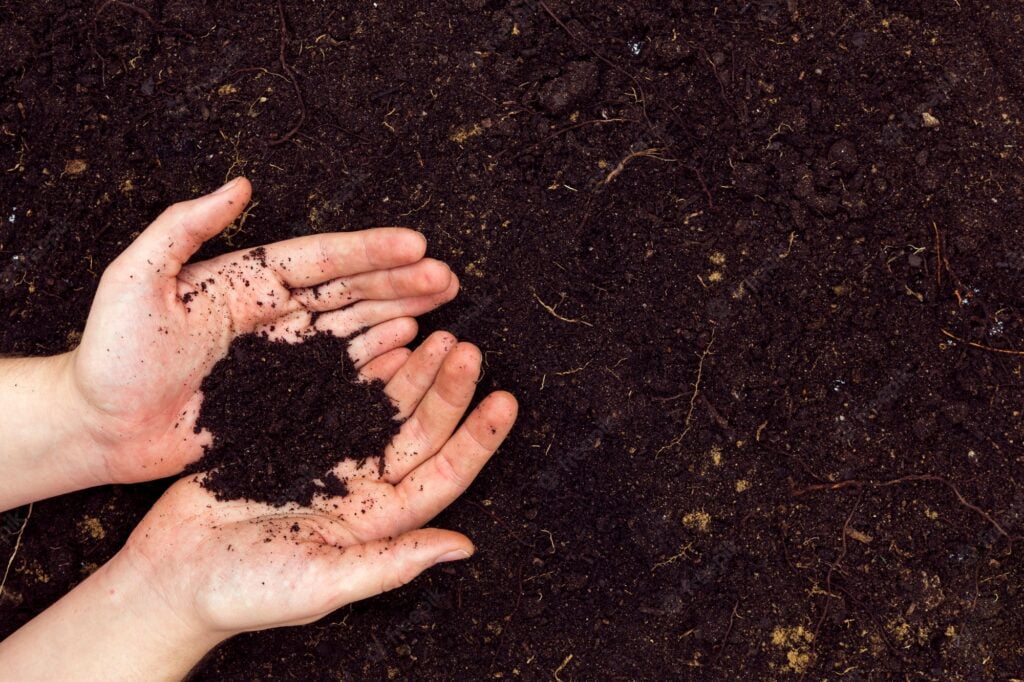La contaminación del suelo: un enemigo latente

Este contenido se publicó originalmente aquí por Solena Ag Inc.
De un vistazo:
- Las actividades humanas, como la agricultura y los procesos industriales, son directamente responsables de la liberación de sustancias contaminantes en el suelo y el medio ambiente.
- La gestión sostenible del suelo garantiza la producción segura de alimentos, la protección de los ecosistemas y, por tanto, la supervivencia de nuestra especie.
- Para solucionar y prevenir los daños al suelo, que amenazan el medio ambiente y la seguridad alimentaria mundial, debemos gestionar eficazmente los suelos erosionados.
Nuestro acceso a alimentos seguros, nutritivos y de alta calidad depende de la salud del suelo. Un suelo contaminado provoca un efecto dominó que pone en peligro la continuidad de la vida tal como la conocemos.1
Uno de los recursos más preciados que poseemos es el suelo, ya que nos proporciona los alimentos y las materias primas que necesitamos para sobrevivir. Sin embargo, debemos recordar que, por desgracia, no es renovable ya que, desde una perspectiva humana, se necesita toda una vida para restablecer su calidad productiva.2
La contaminación del suelo no sólo repercute en el medio ambiente, sino también en todas las formas de vida de nuestro planeta. Pensemos que 95% de nuestros alimentos procede directa o indirectamente de los suelos.3
Se calcula que en 2050 habrá 9.000 millones de personas en la Tierra, 9.000 millones de bocas que necesitarán alimentos sanos.4 Sin embargo, La agricultura y las actividades industriales nos han dejado suelos contaminados e improductivos.
Un peligro latente
Cuando oímos la palabra "contaminación", normalmente las imágenes que nos vienen a la cabeza son grandes bocanadas de humo producidas por coches o fábricas, y ríos obstruidos con basura o productos químicos tóxicos. Es más habitual que oigamos hablar de la contaminación del agua y del aire, porque podemos identificar sus efectos más fácilmente. Sin embargo, no ocurre lo mismo con la contaminación del suelo, ya que no podemos ver cómo entran las toxinas en el suelo.
Sin embargo, este hecho no lo hace menos peligroso. Un tercio de los suelos del planeta ya está dañadoy corremos el riesgo de perder aún más si no aplicamos metodologías que nos ayuden a recuperar y cuidar este recurso.5
Se considera que los suelos están contaminados cuando la cantidad de sustancias químicas tóxicas que contienen es tal que supone un riesgo para la salud humana y el ecosistema.6 El origen de esas sustancias químicas nocivas se encuentra en las actividades humanas, como las prácticas agrícolas insostenibles, las operaciones industriales, la minería y la falta de gestión de residuos.7 En las prácticas agrícolas, el uso excesivo y desenfrenado de fertilizantes y pesticidas es la principal causa de la contaminación de los suelos..8
Consecuencias de la contaminación del suelo
Este problema global pone en peligro la producción agrícola y el medio ambiente, según afirmó el delegado de la Organización de las Naciones Unidas para la Agricultura y la Alimentación (FAO), Hussein Gadain, durante las celebraciones del Día Mundial del Suelo en Egipto.9 Existe una estrecha relación entre la seguridad alimentaria y la cantidad de contaminantes en los suelos.10 Pero este tipo de contaminación también afecta a la seguridad del agua que bebemos y del aire que respiramos.
Un suelo contaminado afecta al medio ambiente de tres maneras diferentes:11
- Los contaminantes se adhieren a las partículas secas del suelo. Cuando el viento se levanta, esas partículas contaminadas acaban flotando en el aire y pueden ser inhaladas por personas o animales.
- Cuando la lluvia o las aguas subterráneas llegan al suelo, pueden disolver y arrastrar los contaminantes que contienen. Estas aguas contaminadas van a parar a fuentes de agua destinadas al consumo humano o animal, o al riego de cultivos..
- Los cultivos que crecen en esos suelos absorben los contaminantes y los almacenan en sus tejidos. Esas toxinas pueden llegar al organismo humano o animal cuando se ingieren. El riesgo es mayor si el agua con la que se riegan también está contaminada.
Las personas que se alimentan de carne de animales que consumieron alimentos o agua contaminados pueden sufrir envenenamiento o incluso cáncer.12 Para desarrollar soluciones eficaces a este problema, es crucial entender cómo entran los contaminantes en el suelo y qué consecuencias tendría.
Agroquímicos y su impacto en la contaminación del suelo
A escala mundial, el uso de productos agroquímicos ha alcanzado niveles récord debido a la gran demanda de alimentos. Aunque su finalidad es aumentar la productividad de la tierra o deshacerse de las plagas, no pueden descomponerse de forma natural porque se producen sintéticamente. Cuando se filtran en el suelo estos productos químicos ponen en peligro su fertilidad y modifican la composición natural de las plantas y reducen el contenido de materia orgánica de la capa superficial del suelo.13
La reducción de la materia orgánica facilita la entrada de los contaminantes en la cadena alimentaria.14 Como se ha dicho, todos los procesos de la naturaleza están interrelacionados: un suelo contaminado libera toxinas en las aguas subterráneas, que posteriormente se almacenan en el tejido vegetal, pasan a los animales de pastoreo y finalmente a los seres humanos que se alimentan de esas plantas y de la carne.
Más allá del impacto medioambiental y nutricional, este desafío mundial también representa pérdidas para el desarrollo económico de algunos paísesdebido a la reducción de la calidad de las cosechas. Según datos de la FAO, 1En África se perdieron 27.000 millones de dólares por la contaminación del suelo.15
Cómo cuidar los suelos
Dado que la mayoría de los contaminantes son resultado de actividades humanas, somos directamente responsables de los daños. Así pues, por el bien de un futuro en el que podamos acceder a alimentos seguros y a un medio ambiente libre de contaminación, es esencial cultivar buenos hábitos.16 Gadain subraya que tratar nuestros suelos de forma sostenible ya no es una opción, sino una obligación para preservar la vida en nuestro planeta.17
Aplicar métodos de agricultura sostenible es, por tanto, imprescindible para cuidar los suelos y beneficiarse de su capital biológico. Si usted es agricultor, siempre es aconsejable ejecutar una análisis del suelo antes de cultivar alimentosespecialmente si su zona de producción está cerca de una zona industrial o minera, o a 1 milla de un aeropuerto, una bahía, un vertedero o una fundición.18
Prevenir esta contaminación debe ser una prioridad mundial. Conociendo sus causas, es posible encontrar y aplicar soluciones eficaces a este problema. Proteger y preservar nuestros suelos es tarea de todos. Podemos poner nuestro granito de arena eligiendo consumir y producir alimentos sostenibles, reduciendo nuestros residuos haciendo compost, o incluso compartiendo esta información con nuestra comunidad y concienciando sobre este reto. A mayor escala, debemos promover y exigir la aplicación de métodos de agricultura sostenible.
Si cuidamos los suelos, ellos nos lo devolverán con alimentos, agua y aire seguros y limpios. ¡Sé la solución para acabar con la contaminación del suelo!19
Referencias
1, 2, 14, 16 http://www.fao.org/fao-stories/article/es/c/1126977/
6, 18 https://www.environmentalpollutioncenters.org/soil/
4, 7, 9, 15, 17 http://www.fao.org/egypt/news/detail-events/en/c/1173563/
3, 5 http://www.fao.org/3/ca3957en/ca3957en.pdf
10 http://www.fao.org/3/I8411EN/i8411en.pdf
11, 12 https://sciencing.com/consequences-soil-pollution-2558.html
13 https://www.conservationinstitute.org/soil-pollution/
13 https://dspace.ups.edu.ec/bitstream/123456789/14712/1/UPS-CT007228.pdf

